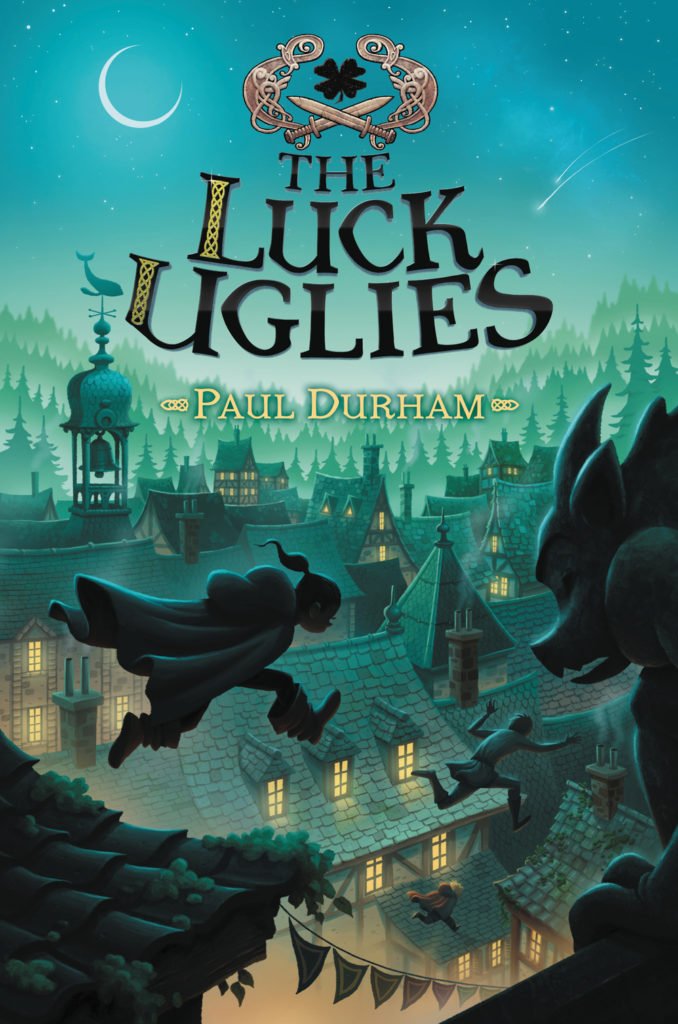craft review by Anne-Marie Strohman
I’ve been working on plotting a few different novels using the sticky note plotting method developed by David Macinnes Gill and outlined in his Plotcasters podcast. Gill uses a 3-act plot structure–Act 1 is ~25% of the book, Act 2 is ~50%, and Act 3 is ~25%. One of the most important elements Gill talks about is the turn of a novel. Usually at or near the midpoint, the turn is where everything changes for the character. The turn comes in the middle of Act 2 and creates a division in the act (he calls the section before the midpoint 2A and the section after it 2B).

I attend Vermont College of Fine Arts, where David Gill teaches, and he often uses the pipe organ in the chapel to illustrate novel structure. You can see the 25% Act 1–the 5 pipes on the left–the 25% Act 3–the 5 pipes on the right–and the 50% Act 2 in the middle. Within that big middle section, the pipes move up to the midpoint, then turn back to head down toward Act 3.
The turn of the story has a lot of power–it acts as a hinge on the clamshell of Act 2, according to Gill. Everything that goes right in the first half of Act 2, goes wrong in the second half, and the turn itself must make that change happen.
As I was reading The Luck Uglies by Paul Durham, I noticed a really effective turn. It combines a few elements Gill suggests, and once I identified the turn, I could see how the first half of Act 2 set up the turn and how the second half of Act 2 follows from the turn. The turn is the goal of 2A and the driving force for 2B.
The Turn
The Luck Uglies is the story of a town threatened by the Bog Noblins who live in the nearby forest. The town is nominally protected by the Earl of Longchance, whose father and grandfather had a treaty with the mysterious Luck Uglies to rid the town of Bog Noblins. Rye O’Chanter, the main character, lives on the edge of town and sometimes helps her mother run a shop that sells charms. She lives by a long list of rules, such as don’t ever let the cat out and never take off your rune necklace. When Rye accidentally lets the cat out and follows it to the bogs outside of town, she is surprised by a Bog Noblin and ends up stealing its leather pouch with trinkets in it. Rye observes and engages with the adults in the town who are arguing over whether to call in the Luck Uglies or not. Most of the town (following the Earl) is prejudiced against the Luck Uglies, while others see the Luck Uglies as their only option.
The turn of the story occurs in Chapters 15 and 16. The Earl has sent some men to the O’Chanters’ house because of rumors that a Luck Ugly was seen on their street. The Constable accuses Rye’s mother of harboring a Luck Ugly. That Luck Ugly then shows up to defend the O’Chanters. Rye recognizes him as Harmless, a man she has been taking breakfast to in the nearby cemetery every morning (with her mother’s permission). At the end of Chapter 15, Rye’s mother says, “Please invite your father inside for dinner.” Chapter 16 works through Rye’s reaction to the news that not only is Harmless her father, he’s also a Luck Ugly. Which means the Luck Uglies have arrived.
The turn works well first because it reveals a pivotal moment in the external story–the Luck Uglies have shown up, and the battle for the town’s protection has begun. But it works even better because this arrival, this person, means something to our hero, Rye. It changes not only the external circumstance, but her internal sense of who she is.
Setting Up the Turn
Looking back at Chapters 1-14, we can see how Durham has set up this moment. Durham first mentions Rye’s father on page 11, when he describes the boots Rye wears that had belonged to her father when he was her age. While Rye doesn’t spend a lot of time wondering about her father, the single Mrs. O’Chanter highlights his absence. Durham also sets up the character of Harmless. Rye meets him and, with her mother’s permission, spends time with him in the cemetery every day she can. She only knows he’s a wanderer, but they do develop a sort of friendship over the first half of Act 2. Durham also establishes the mystery surrounding the Luck Uglies from the very first page. In a very short prologue, the Luck Uglies are described as monsters, as ne’er-do-wells but just ordinary men, and they are set up in opposition to the Earl’s soldiers who have chased the Luck Uglies from the town of Drowning. As tensions increase with the presence of the giant Bog Noblins, the town disagrees about whether they want Luck Uglies to be called in.
Combining the External and Internal
When the turn happens, readers are prepared for the change to the external story–the Luck Ugly is revealed–and Rye’s internal sense of identity–her father is Harmless, the Luck Ugly. This plot moment is most important for what it means to Rye.
The rest of the book, then, follows from this moment. Rye works with Harmless and the Luck Uglies to free the town of Bog Noblins, with no help at all from the Earl’s soldiers. Rye claims her identity as the daughter of a Luck Ugly and does her part to save the town.
The Power of a Strong Turn
Durham has made his job as a writer easier by having a strong turn near the midpoint of the book. He has something to build toward in the first half of Act 2 and something to move from in the second half.
In his podcast, Gill points out that one doesn’t have to have a midpoint turn (see Katherine Applegate’s Crenshaw, for example), but it sure can make one’s job as a writer easier.
Action:
- Listen to David Macinnes Gill’s Plotcasters podcast.
- Take a look at your work-in-progress. Do you have a strong mid-point turn? Is it catastrophic, physical, a reveal, or a realization? Is it some combination?
- If the turn only relates to the external plot, explore what that event means to the character. How does it fundamentally change them?
- If you don’t have a turn, would a turn help give your story momentum?
Anne-Marie Strohman (co-editor) writes picture books, middle grade novels, and young adult short stories and novels. She is trained as a teacher, an editor, and a scholar, specializing in Renaissance Literature. She holds an MFA in Writing for Children and Young Adults from Vermont College of Fine Arts and is an active member of SCBWI. Find her at amstrohman.com and on Twitter @amstrwriter.


COMMENTs:
0